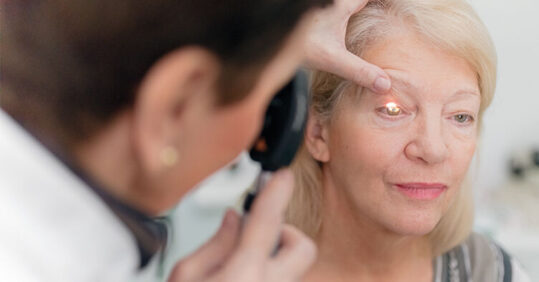CPD module: Managing common eye conditions

Nurses working in general practice will encounter eye problems fairly frequently, and here Dr Anup Shah offers guidance in a module on the key presentations, their assessment and treatment
Nurses working in general practice will encounter eye problems fairly frequently. These may present as ‘red eye’, where blood vessels on the surface of the eye are dilated due to irritation or infection.
There is a wide range of potential underlying causes of varying severity. It is important for nurses to be confident in taking the right history and conducting an eye examination, so they can quickly grasp if the likely cause is serious and requires referral, or alternatively benign and manageable within primary care.
Related Article: NHSE confirms dates and eligibility for autumn Covid and flu jabs
This module will explain how to recognise when the likely cause is serious and requires either immediate or routine referral, be able to establish likely benign causes of red eye and common eyelid complaints that can be managed in primary care, and manage some key benign conditions appropriately.
Most people who present with eye complaints will have something mild, self-limiting and innocuous. However, any potential serious underlying cause will need to be referred immediately, so it is vital to be able to identify this minority of cases.
Most serious causes of eye problems can be established by taking a good history.
The most important questions to ask are:
- Is there eye pain?
- Is there visual blurring?
- Is there significant sensitivity to light (photophobia)?
- Is the patient a contact lens wearer?
If the answer to any of the above four questions is ‘yes’, you can presume there is a serious underlying cause and refer the patient to a specialist. If the answer is ‘no’ to all four questions, then it is unlikely to have a serious underlying cause.
Key points
Related Article: Gypsy, Roma and Traveller healthcare: How can primary care serve this group?
- Most eye complaints presenting in primary care are mild but if the history points to a potentially serious cause, urgent referral is warranted, particularly if the problem is unilateral or related to contact lens use
- Serious causes include corneal ulcers and acute anterior uveitis, both of which may be characterised by deep pain and significant photophobia. Less serious causes include conjunctivitis and eyelid conditions
- Conjunctivitis may be infective or allergic. Consider chlamydial conjunctivitis in those aged 15 to 30, and be alert for excessive pus in bacterial conjunctivitis, which may indicate gonorrhoea needing urgent referral
- Ectropion and entropion are often linked to age-related eyelid laxity and may need ophthalmology referral. Entropion can be more serious, as the eyelashes turn inward and may cause corneal damage leading to infection
Author
Dr Anup Shah is a GP with a special interest in ophthalmology at Moorfields Eye Hospital in London, and a lecturer in primary care ophthalmology.
Find the module
The full CPD module can be found on the Nursing in Practice 365 website.
Related Article: Public urged to see practice nurse before travelling amid high enteric fever cases
Not a Nursing in Practice 365 subscriber? Register for free or gain access to more CPD content as a Premium member.

See how our symptom tool can help you make better sense of patient presentations
Click here to search a symptom




